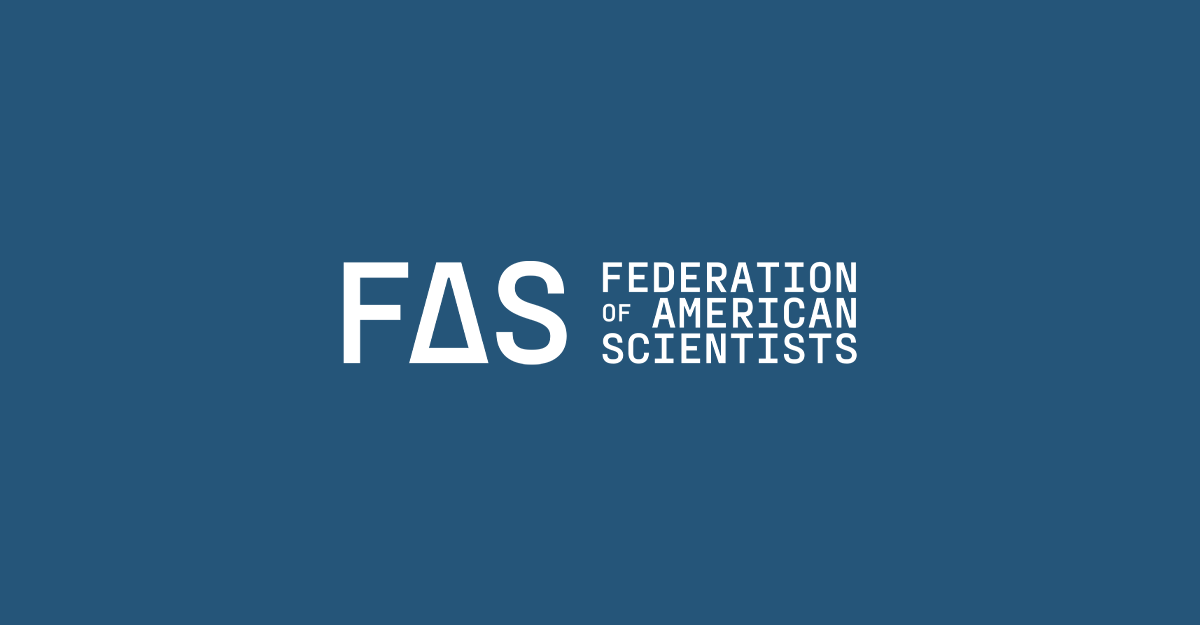
Federation of American Scientists Introduces Dr. Jedidah Isler as Its Inaugural Chief Science Officer
Dr. Isler exemplifies a commitment to rigor and a talent for communicating the connections between science and policy
Washington, D.C. – January 14, 2025 – The Federation of American Scientists is excited to welcome Dr. Jedidah Isler as the organization’s first Chief Science Officer. This new position is an important part of the leadership team at FAS, and Jedidah brings scientific expertise, strategic direction to our policy teams, and a deep understanding of how science and technology interact with innovative, effective, and inclusive public policy.
“Having Jedidah join the FAS team is an important step for our organization,” Daniel Correa, FAS CEO said. “She shares the ambition and vision for impact that all our team holds, and will help us build stronger bridges between the scientific and technological community and those making policy decisions in government. We knew we needed a particular type of person to fill this role – and Jedidah is that special individual who exemplifies a commitment to rigor and a talent for communicating the connections between science and policy. I’m thrilled.”
Dr. Isler has worked extensively with schools, universities, nonprofit organizations, and planetariums across the country to inspire and advance a more equitable future where anyone can participate in, contribute to, and benefit from science and technology. She is a nationally-recognized public speaker, and the founder and former executive director of the STEM en Route to Change (SeRCH) Foundation, Inc., whose signature program, VanguardSTEM, is thriving with a new generation of women of color scientists and leaders.
A proud double-HBCU graduate (Norfolk State University and Fisk University), Isler became the first African American woman to complete her Ph.D. in astrophysics at Yale University with a focus on hyperactive supermassive black holes. She continued that research on the faculty at Dartmouth College before turning her attention to science policy and joining the White House Office of Science & Technology Policy (OSTP). At OSTP, Isler was Principal Assistant Director and interim lead for the Science & Society division.
“I’ve spent a lot of time in the world of science, science communication and policy, and FAS has definitely carved out a unique role in this sphere,” Isler said. “I’ve already worked with many people on this team during the Day One Project, and I’ve been very impressed with what they are capable of – particularly opening the policy development process to anyone with a good idea. This is deeply aligned with my personal commitment to increase access and engagement across the science & technology ecosystem. I’m delighted to join FAS at this critical juncture to help identify, develop and share the best science and technology policy ideas from anyone who wants to offer them with a team of talented colleagues who already “get it.”.”
ABOUT FAS
The Federation of American Scientists (FAS) works to advance progress on a broad suite of contemporary issues where science, technology, and innovation policy can deliver dramatic progress, and seeks to ensure that scientific and technical expertise have a seat at the policymaking table. Established in 1945 by scientists in response to the atomic bomb, FAS continues to work on behalf of a safer, more equitable, and more peaceful world. More information about FAS work at fas.org.
While rural schools are used to being scrappy and doing more with less, without state and federal support, districts will be hard-pressed to close teacher workforce gaps on their own.
To maximize clean energy deployment, we must address the project development and political barriers that have held us back from smart policymaking and implementation that can withstand political change. Here’s how.
At a time when universities are already facing intense pressure to re-envision their role in the S&T ecosystem, we encourage NSF to ensure that the ambitious research acceleration remains compatible with their expertise.
FAS CEO Daniel Correa recently spoke with Adam Marblestone and Sam Rodriques, former FAS fellows who developed the idea for FROs and advocated for their use in a 2020 policy memo.